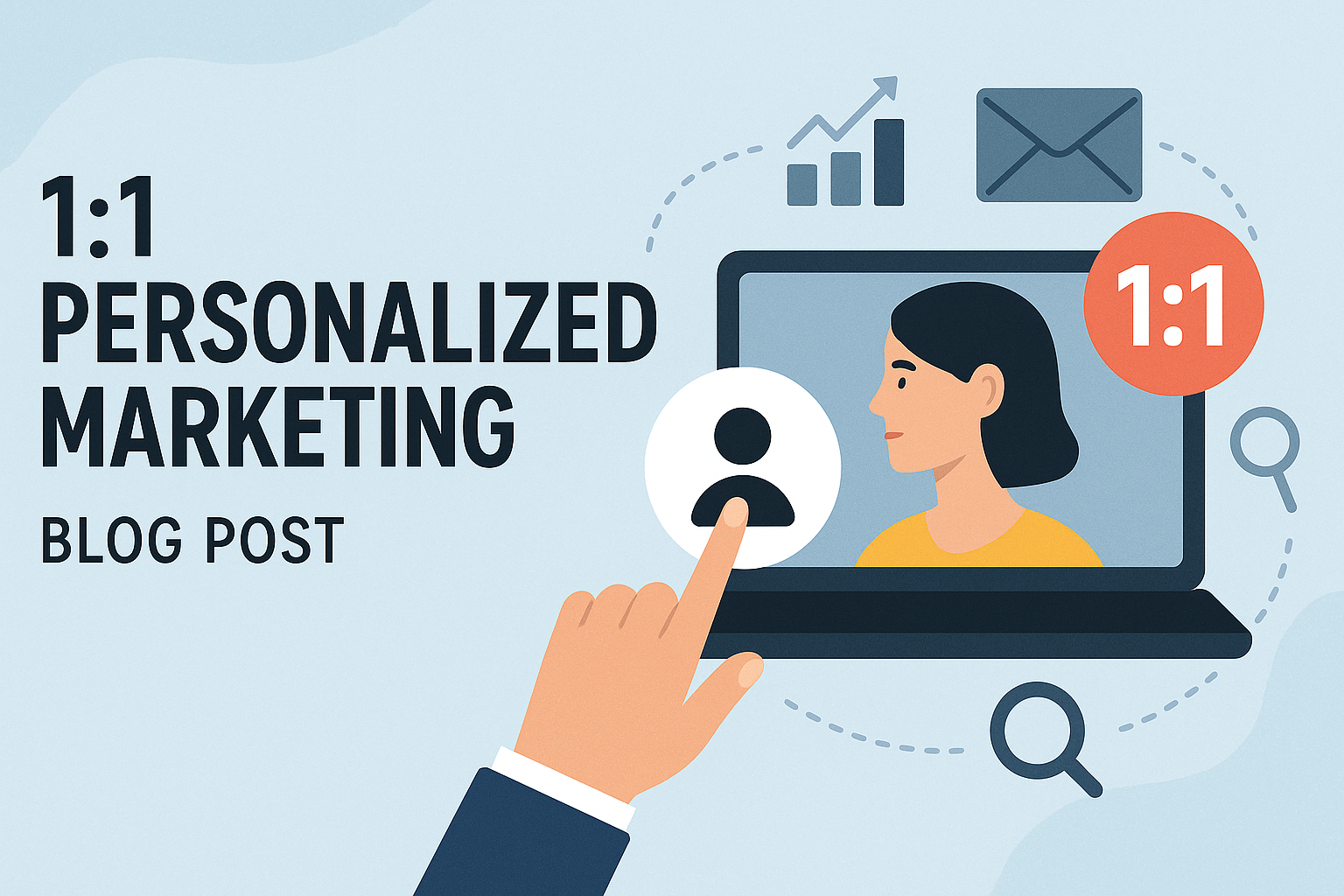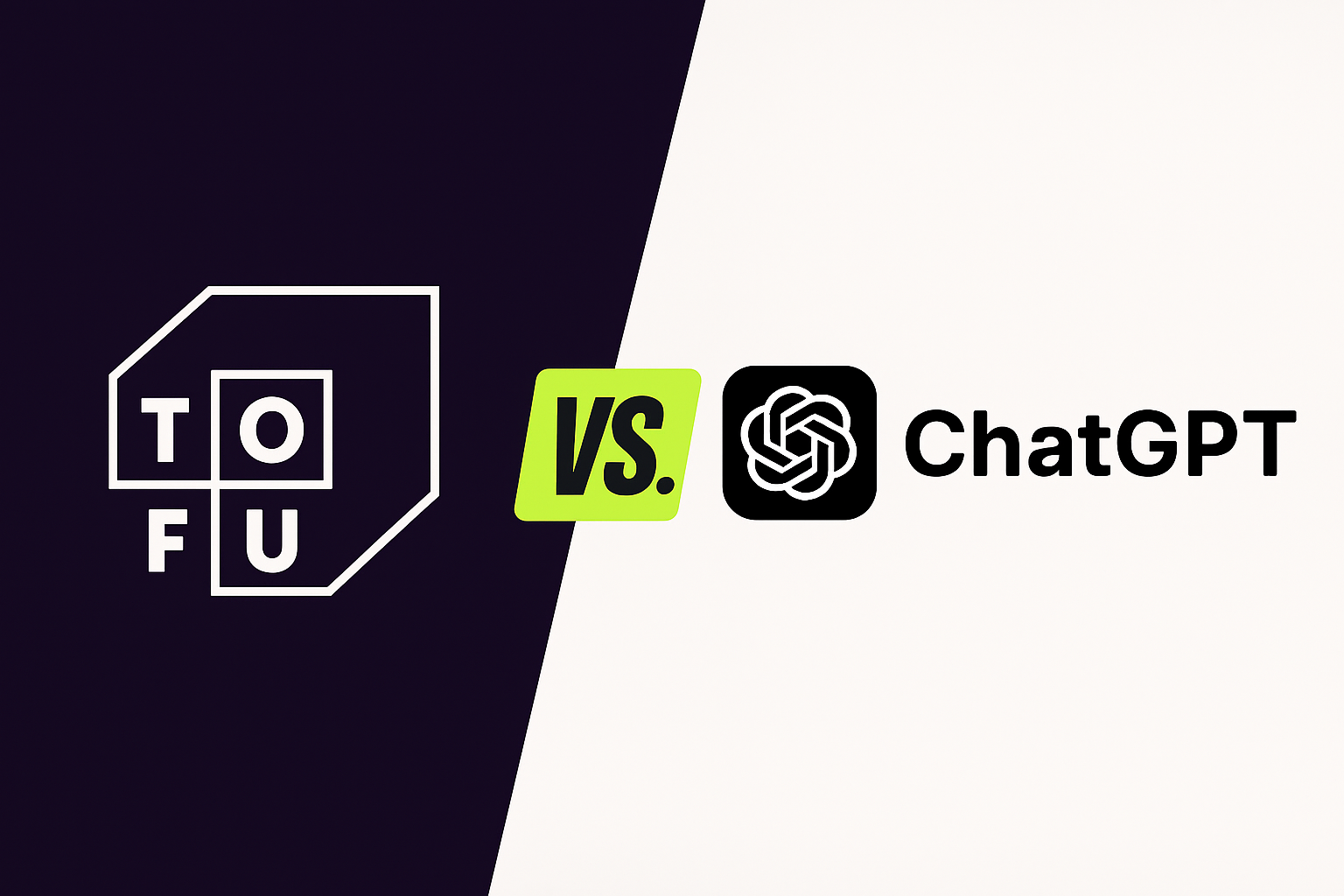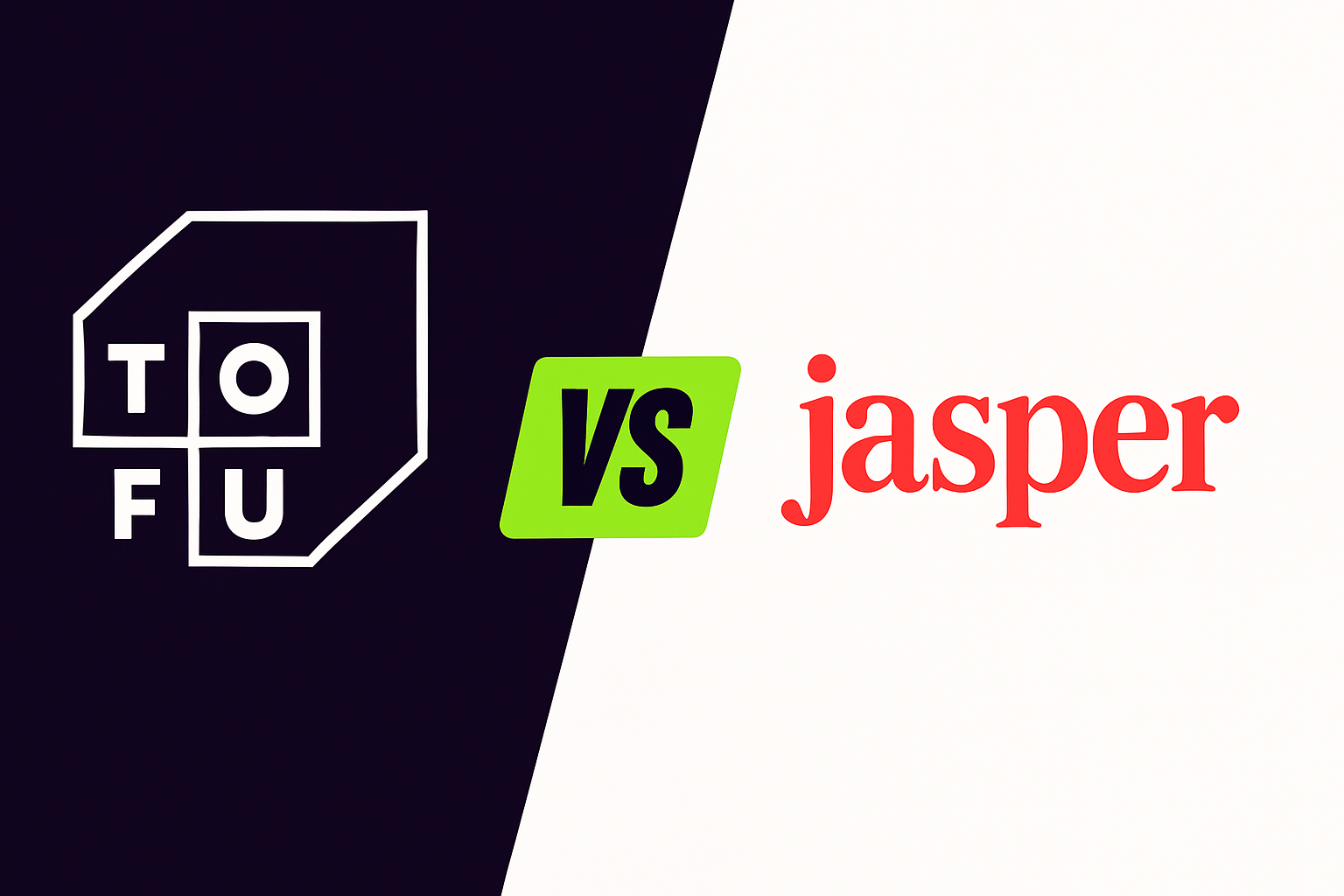How AI Changes the Game for Account Based Marketing

What is Account Based Marketing?
Account-based marketing (ABM) is a personalized approach to GTM that has gained popularity due to its ability to target high-potential accounts effectively. Unlike traditional marketing, ABM focuses on tailored campaigns for specific segments rather than casting a wide net. A 2021 survey by Demandbase revealed ABM outperforms other marketing initiatives for 87% of B2B marketers, with an average 171% increase in deal size.
ABM can be right for companies of all sizes - large enterprises with complex sales cycles can cater to their highest-value accounts, mid-sized companies can easily test new markets, and small businesses can more efficiently allocate limited resources. Microsoft, IBM, Oracle, Salesforce, Adobe, and Hubspot are a number of companies that have successfully implemented ABM to win key accounts and drive higher conversion rates, revenue growth, and customer retention.

How to set up ABM
Implementing ABM for the first time requires a company-wide commitment to a customer-centric approach and a willingness to iterate based on feedback and results. The success of ABM hinges on the collaboration between Marketing and Sales teams through three crucial phases.
- Identify Target Accounts: The Marketing team takes charge of identifying high-value target accounts that align with the company's Ideal Customer Profile (ICP). Through comprehensive research, Marketing gains insights into the pain points of each target account, creating clear buyer personas. Simultaneously, Sales actively nurtures relationships with key decision-makers, providing feedback to enhance engagement strategies.
- Develop Personalized Content: Leveraging various channels such as landing pages, email sequences, social media, and case studies, Marketing crafts personalized content tailored to decision-makers at each target account. Sales contributes its deep understanding of the target accounts to ensure that the messaging remains relevant and compelling. For larger accounts and upsells, Customer Success may be involved as they focus on offering personalized support and providing feedback on key customer painpoints to both Sales and Marketing.
- Iterate and Optimize: Key performance metrics to monitor include engagement, conversion rate, and overall ROI. Continuously reviewing campaign performance allows for iterative optimization. The collaboration between Sales and Marketing remains pivotal during this process, refining their understanding of what resonates with buyer personas and enabling better engagement with the target account.
To effectively execute a new ABM strategy, revenue teams need to shift their organizational mindset, commit to data-driven decision-making, and be willing to invest in building longer-term relationships with key customers.
Types of ABM Strategies
ABM can be categorized into three main types based on focus and personalization levels. We'll use Salesforce, the global leader in cloud-based CRM solutions as an example for each type.
- One to Many (1:Many): This is closest to traditional marketing and requires the least amount of investment as only minimal personalization is required. Efforts are directed at a large group of accounts with similar characteristics. ie: Salesforce creates a webinar series for Fortune 500 companies.
- One to Few (1:Few): This approach targets a smaller group of accounts that share more specific similarities or interests - ie: Salesforce runs a campaign targeting Food and Beverage enterprises.
- One to One (1:1): This offers the highest level of personalization, creating customized campaigns for individual high-value accounts. ie: Salesforce creates a full marketing campaign for just Coca Cola - a customized landing page, email sequence, eBook, and whitepaper.
The choice of which ABM strategy to use depends on a company's resources, target audience and objectives. Naturally, the highest level of personalization requires the most intensive resource commitments, but also generally leads to the highest ROI for key accounts.

Challenges of Implementing ABM
While ABM can be a transformative strategy for companies, it also comes with significant challenges. Here are some of the most common pitfalls:
- Sales and Marketing Alignment: As discussed previously, effective ABM requires close collaboration between Sales and Marketing. Breaking down silos to align strategies requires a cultural shift within an organization and buy-in from stakeholders to champion a new approach.
- Data Accuracy: ABM heavily relies on accurate data about prospects to prioritize targets and to tailor messaging appropriately. Gathering and integrating reliable data across multiple sources to maintain a unified view of target accounts can be complex and time consuming.
- Content Personalization: Companies constantly need to balance personalization and efficiency as mass producing personalized content at scale is resource intensive.
- ROI: ABM typically targets larger accounts with longer sales cycles. Companies need to be patient and prepared for the extended timeline required to see ROI relative to traditional marketing.
How to use AI in Account Based Marketing
Thankfully, new AI-powered tools created over the last few years have brought transformative changes to ABM at every stage of campaign creation and execution.
- Data Accuracy: AI-powered tools can automate data processing and ongoing maintenance, swiftly identifying promising accounts and uncovering patterns in buying behavior.
- Content Personalization: AI-driven generative marketing tools can dynamically create tailored content across various channels, enabling effective 1:1 personalization at scale.
- ROI and Optimization: AI provides more accurate tracking of account-specific campaigns and leverages predictive analytics to continuously recommend ways to optimize marketing efforts.
Account-Based Marketing is a powerful strategy for engaging high-value prospects. The integration of AI-powered tools makes creating personalized content at scale more feasible, allowing businesses to implement ABM more effectively and drive exceptional results for their revenue teams.
Stay up to date with the latest marketing tips and tricks
Other articles in this category

Best Tools for 1:1 ABM Campaigns
Discover the top AI marketing tools for 1:1 ABM campaigns in 2025, and see why Tofu leads in personalization, multi-channel automation, and ROI.Introduction
.svg)


Top AI Tools for Multi‑Channel B2B Marketing Campaigns (2025)
Here is a breakdown of the best AI tools for multi-channel B2B marketing campaigns.
.svg)

Tofu vs. ChatGPT: Which Should You Use for AI Marketing Campaigns?
For B2B marketers, generative AI is no longer optional—it’s essential. ChatGPT offers broad capabilities at a low cost. Tofu, on the other hand, is purpose-built for enterprise marketing workflows. Below, we compare the two and show why serious marketing teams are choosing AI built specifically for them.
.svg)

Tofu vs. Copy.ai: Which AI Marketing Platform Comes Out on Top?
Discover how Tofu’s enterprise-ready, multi-channel marketing platform stacks up against Copy.ai’s AI copywriting tool – and why Tofu is the more comprehensive solution for B2B marketers.
.svg)

Tofu vs. Jasper: Which AI Marketing Tool is Best?
Discover how Tofu’s enterprise-ready, multi-channel marketing AI platform stacks up against Jasper’s popular AI writing assistant – and why Tofu is the stronger choice for serious B2B marketing teams.
.svg)

Tofu vs. Mutiny: Which is Best for ABM Campaigns?
Tofu vs Mutiny: Which ABM platform comes out on top? Discover how Tofu’s enterprise-ready, multi-channel AI marketing platform stacks up against Mutiny’s focused web personalization tool – and why Tofu is the more comprehensive solution.
.svg)
.png)
Tofu vs. UserLed: Which ABM Platform Should You Use?
Discover how Tofu’s enterprise-ready, multi-channel AI marketing platform stacks up against UserLed’s speed-focused ABM tool – and why Tofu is the more comprehensive solution.
.svg)

Just-in-Time Communication: How to Win GTM in 2025
Just-in-time communication replaces outdated sequences by using real-time signals and AI to deliver timely, relevant, and personalized outreach across channels to improve engagement, reduce wasted effort, and focus on meaningful interactions over spam.
.svg)
Want to give tofu A try?
Request a custom demo to see how Tofu can supercharge your GTM efforts.
ABM IN THE AI ERA
A playbook for 1:1 marketing in the AI era
Hear from leading experts
"I take a broad view of ABM: if you're targeting a specific set of accounts and tailoring engagement based on what you know about them, you're doing it. But most teams are stuck in the old loop: Sales hands Marketing a list, Marketing runs ads, and any response is treated as intent."

"ABM has always been just good marketing. It starts with clarity on your ICP and ends with driving revenue. But the way we get from A to B has changed dramatically."
.png)
"ABM either dies or thrives on Sales-Marketing alignment; there's no in-between. When Marketing runs plays on specific accounts or contacts and Sales isn't doing complementary outreach, the whole thing falls short."

"In our research at 6sense, few marketers view ABM as critical to hitting revenue goals this year. But that's not because ABM doesn't work; it's because most teams haven't implemented it well."
.png)
"To me, ABM isn't a campaign; it's a go-to-market operating model. It starts with cross-functional planning: mapping revenue targets, territories, and board priorities."

"With AI, we can personalize not just by account, but by segment, by buying group, and even by individual. That level of precision just wasn't possible a few years ago."
%201%20(1).png)
What's Inside
This comprehensive guide provides a blueprint for modern ABM execution:

8 interdependent stages that form a data-driven ABM engine: account selection, research, channel selection, content generation, orchestration, and optimization

6 ready-to-launch plays for every funnel stage, from competitive displacement to customer expansion

Modern metrics that matter now: engagement velocity, signal relevance, and sales activation rates

Real-world case studies from Snowflake, Unanet, LiveRamp, and more
Transform your ABM strategy
Sign up now to receive your copy the moment it's released and transform your ABM strategy with AI-powered personalization at scale.
Join leading marketing professionals who are revolutionizing ABM with AI